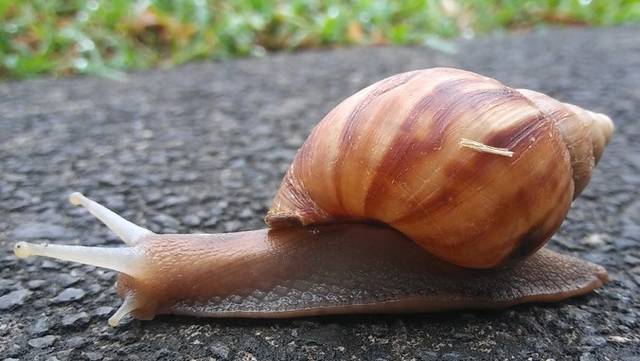KAILUA-KONA — A toddler from East Hawaii has contracted rat lungworm disease, the state Department of Health announced in a press release Thursday.
KAILUA-KONA — A toddler from East Hawaii has contracted rat lungworm disease, the state Department of Health announced in a press release Thursday.
Laboratory results from a sample of the child’s spinal fluid confirmed evidence of the rat lungworm disease parasite. It is the third confirmed case of rat lungworm disease contracted on Hawaii Island this year and the fifth case statewide in 2018.
The patient visited a local emergency room last week after initially falling ill in late July. The child was subsequently hospitalized and transferred to Oahu for further case management. After several days in the hospital, doctors discharged the child upon improvement of their symptoms.
Disease investigators with DOH are investigating the possible source of contraction.
“Our children move quickly and are naturally curious about the world around them, which is a normal part of their early development,” Hawaii Island District Health Officer Aaron Ueno said in a press release. “We can reduce the risk of rat lungworm disease by controlling slugs and snails around our homes and gardens, and by keeping children away from these harmful vectors as much as possible. The risk of rat lungworm disease exists statewide, and we can work together to take steps to prevent it in our communities.”
DOH provides the following recommendations to prevent rat lungworm disease:
• Control snail, slug and rat populations around homes, gardens and farms. Get rid of these vectors safely by clearing debris where they might live, and also using traps and baits. Always wear gloves for safety when working outdoors.
• Inspect, wash and store produce in sealed containers, regardless of whether it came from a local retailer, farmer’s market or backyard garden.
• Wash all fruits and vegetables under clean, running water to remove any tiny slugs or snails. Pay close attention to leafy greens.





Can you get infected from snail slime or feces? Can you get infected from rat feces/urine or is there a need for the snail in the process?
Hi @fishman2:disqus Malama o puna dot org has an excellent article on this. The little parastic worms live in the pulmonary arteries of the rats here in Hawai’i (that likely came from Asia and central America, two kinds so far). The rats’ feces have the parasites. Anything that touches or crawls over the rat feces tracks them onto other places, especially food and water sources. The rats’ dirty feet, snails or slugs, mice, land crabs, freshwater shell fish, all kinds of creepy crawly things can contaminate food and water by spreading the rats’ feces. Eating snails or crawly things without properly cleaning and cooking them can cause the spread to humans and even animals. The Asian kind causes the parasites to enter the brain and spinal fluid of the victim. The Costa Rican kind goes more to the digestive system. People (and animals) can become a little sick or end up permanently damaged, especially in the nervous system. 76% of snails here have it. Wash well after gardening or landscaping. Soak vege’s in 10% (man I’d go 30-40%) diluted vinegar with clean water. Cook stuff really well, but no time instructions were listed for cooking.
Not an expert, but based on what I’ve read:
(1) Yes, you can get infected from the slime, although the older/drier the slime trail, the less risk (the parasites need moisture to survive). I’d *assume* similar would apply to snail/slug feces.
(2) Rat feces contains “first-stage” larvae, which are not infective to humans at that point. They need a host organism (snail, slug, etc.) to develop into “third-stage” larvae before they become infective to humans… so yes, that host organism snail, etc. is needed. Not sure about rat urine, but would *assume* same things would apply as for feces.